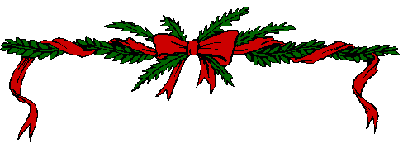





Advent
Advent is a season observed in many Western Christian churches as a time of expectant waiting and preparation for the celebration of the Nativity of Jesus at Christmas. The term is an anglicized version of the Latin word adventus, meaning "coming".
Latin adventus is the translation of the Greek word parousia, commonly used to refer to the Second Coming of Christ. For Christians, the season of Advent anticipates the coming of Christ from two different perspectives. The season offers the opportunity to share in the ancient longing for the coming of the Messiah, and to be alert for his Second Coming.
Advent is the beginning of the Western liturgical year and commences on Advent Sunday. At least in the Roman Catholic, Anglican, Lutheran, Moravian,Presbyterian and Methodist calendars, Advent starts on the fourth Sunday before December 25, which is the Sunday between November 27 and December 3inclusive.
The Eastern churches' equivalent of Advent is called the NativityFast, but it differs in both length and observances and does not begin the church year, which starts instead on September 1. The Eastern Christmas fast does not use the equivalent parousia in its preparatory services.
The keeping of an advent wreath is also a common practice in homes or churches. The readings for the first Sunday in Advent relate to the old testament patriarchs who were Christ's ancestors, so some call the first advent candle that of hope. The readings for the second Sunday concern Christ's birth in a manger and other prophesies, so the candle may be called of Bethlehem, the way or of the prophets. The third Sunday, Gaudete Sunday after the first word of the introit (Philippians 4:4), is celebrated with rose-colored vestments similar to Laetare Sunday at the middle point of Lent.
The readings relate to St. John the Baptist, and the rose candle may be called of joy or of the shepherds. In the Episcopal Church USA, the collect stir up may be read during this week, although before the 1979 revision of the Book of Common Prayer it was sometimes read in the first Sunday of Advent. Even earlier, 'Stir-up Sunday' was once jocularly associated with the stirring of the Christmas mincement, begun before Advent. The phrase 'Stir up' occurs at the start of the collect for the last Sunday before Advent in the 1662 Book of Common Prayer.
The readings for the fourth Sunday relate to the annunciation of Christ's birth, so the candle may be known as the Angel's candle. The Magnificat or Song of Mary may be featured. Where an advent wreath includes a fifth candle, it is known as the Christ candle and lit during the Christmas Eve service.
The weeks before Christmas are full of excitement. People rush about shopping for presents, decorating their homes, sending cards, and generally getting ready for the coming holiday.
Advent (which means 'coming') begins on 1 December. In the Chrurch this is the time when people fast and pray while remembering the long journey that Mary and Joseph had to make to Bethlehem.
Decorations have been used for many years to add to this feeling of anticipation. In many churches candles are lit on the Sundays before Christmas.
A custom adopted from Germany is the making of an Advent crown. This is a wreath of evergreens hung from the ceiling, and decorated with four candles. One of these candles is lit on each of the Sundays up to Christmas, until on the fourth Sunday they are all alight.
Another type of decoration used at this time is the Advent calendar. This also came originally from Germany. The early calendars were pictures with twenty-four windows cut in them. Behind each window there was a small present or sweet. Today Advent calendars have pictures behind the windows, the last is always the Nativity scene which is opened on Christmas Eve.
Did you know that the very first Christmas Natuvuty scene was life-size, which real people and animals standing in for the figures in the Christmas story? It was set up by St. Francis of Assisi, in his tiny chapel in Italy over 700 years ago. The Nativity scene is now a popular feature of Christmas in homes all over the world.
Glossary:
to fast - поститься
anticipation - ожидание
wreath - венок
Nativity scene - Рождественские ясли
Task 1
Dear children,
You have learnt about Christmas tradition - Advent, the beginning of the holiday. We are sure you are able to make your own Advent wreath. Take some branches of fur-trees, tinsels, decorations, put four candels and take a photo of your creation. Send your JPG file to us. Deadline is till the 20th of December, 2021.
Good luck to you!
